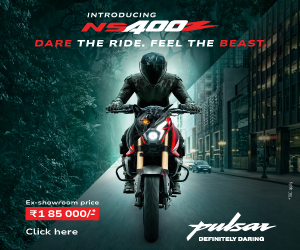 BIKE India smokes some fresh rubber at TVS Tyres’ facility in Madurai, Tamil Nadu, and rediscovers interesting facts about the wheel. You can smell a lot of fun already, huh?
BIKE India smokes some fresh rubber at TVS Tyres’ facility in Madurai, Tamil Nadu, and rediscovers interesting facts about the wheel. You can smell a lot of fun already, huh?
Testing: Aspi Bhathena, Words and Photography: Sarmad Kadiri
We have been testing motorcycle abilities most of the time, but this month decided to give it a rubbery twist. How about testing an intrinsic part of the bike’s anatomy that ensures your comfort by always being in touch with the tarmac? Tyres! It is a very vital component, because no matter how great the chassis or suspension setting, it is tyres that can actually make or mar a bike. Yet motorcycle makers do not produce such an important part themselves and depend on tyre manufacturers to acquire the right tyres for their bikes. Keeping all this in mind, my boss Aspi and I hopped on to the first flight to Tamil Nadu and headed straight for some karmic testing at TVS Tyres’ well-equipped facility in Madurai, the temple city.

Just by way of background, TVS Tyres are the largest OEM suppliers with a lion’s share (almost 37 per cent) and also happen to be the largest two-wheeler tyre makers in our country. We wanted to test their newly developed after-market tyres that are about to hit the Indian market. They seemed very excited about the newly developed tyres and we thought, why not put them to the BIKE India acid test? Yes, it’s a bit more vitriolic than normal acid!
In the tight two-day trip, we utilised the first day learning and understanding the technology. We went around the facility and saw rubber take the shape of a tyre. The TVS Tyre team, led by S. Gopalakrishnan, GM (R&D), acquainted us with the entire manufacturing process of two-wheeler tyres and also showed us their latest products and the work they had put in to develop them. A little bird informed us that the 90-year-old firm is also developing radial tyres for bikes and even a dual compound tyre. To elaborate upon that, the dual compound has a soft compound rubber on the side tread for road grip and a harder compound layer on the middle tread, which improves fuel efficiency and life of the tyre. Nice. After the factory tour we emerged a more knowledgeable duo. By the way, did you know that about 72 materials are used in the manufacture of a single tyre? We did, and, of course, now you do. Enough gyaan! Day two was when we got into action.
Next morning we reached TVS Tyres’ test track very early. The track is a few kilometres away from the Madurai plant. Here we got both an exclusive preview and an opportunity to test the new range that is in the pipeline. According to the company, these tyres have been made using different compound combinations and extended polymer to offer a better feel and improved grip. We tested four different types of tyres, namely, the Standard, Sample A, Sample B and Sample C.

We began with the OEM tyres (Standard) that are currently supplied to manufacturers like Honda for the CBF Stunner and to TVS for the Apache RTR 180. Then we swapped the tyres from the newer range. Sample A had a little extended polymer, but had the same compound as Standard. Sample B had the same amount of polymer as Standard, but had softer compound. Lastly, Sample C had extended polymer and ran on softer compound. We also tested tyres from the competitors to get a fair idea of where TVS Tyres stand.
After hours of testing under the unforgiving Madurai sun we decided to call it a day and shared our conclusion with our friends at TVS Tyres.
Here’s an extract:
There were just two places on the track where we could actually push the tyres. First was the quick right-left-right immediately after the first right-hander, where we got to push the front end. When the tyre grip was good, we could flick the bike and easily change direction. The second was the long right-hander, where we could test the rear tyre. The tyre that emerged as the most promising was Sample C, for it held the line and kept the bike very composed while we did quick manoeuvring.

The Standard tyre, on the other hand, was struggling during the same sharp turns even at lower speeds and the rear tyres lost grip round the tight corners, screaming and protesting. In comparison, Sample C with its strong construction and soft compound inspired confidence and, interestingly, the right-hand turn exit speed also increased by seven km/h! The newly developed Sample C was up there or slightly better than its competitors as it demonstrated a good combination of grip and feel.
Obviously, TVS Tyres, treading the right track, have carved out a fine product that can rock the boat for competition. Now what remains to be seen is when TVS will launch the salvo. Will the competition be caught off-guard or are they already preparing for a counter-attack? Either way, it’s an exciting time for the Indian bike enthusiasts and we’re definitely not complaining!


 Sarmad Kadiri leaves his performance bike behind and rides the new TVS Max4R to get a feel of the other end of the two-wheeler spectrum
Sarmad Kadiri leaves his performance bike behind and rides the new TVS Max4R to get a feel of the other end of the two-wheeler spectrum



















































